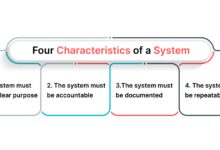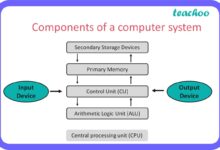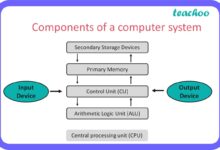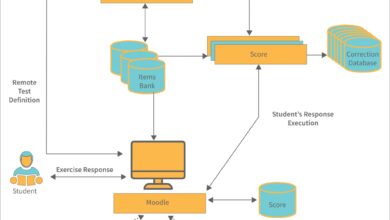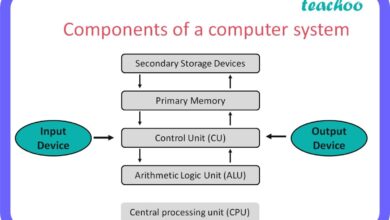System Check 101: The Ultimate 7-Step Power Guide
Ever felt like your computer is running slow, apps are crashing, or your device just isn’t behaving? A simple system check could be the game-changer you need. It’s not magic—just smart maintenance.
What Is a System Check and Why It Matters

A system check is a comprehensive evaluation of your device’s hardware, software, and overall performance. Whether you’re using a Windows PC, Mac, smartphone, or server, performing a regular system check ensures everything runs smoothly, securely, and efficiently.
Defining System Check in Modern Tech
In today’s digital world, a system check goes beyond just rebooting your device. It involves scanning for software updates, checking disk health, monitoring CPU and RAM usage, and identifying potential security threats. Think of it as a full-body scan for your tech.
- Verifies hardware functionality
- Identifies software conflicts
- Ensures optimal performance
Why Every User Needs Regular System Checks
From casual users to IT professionals, everyone benefits from routine system checks. They prevent crashes, extend device lifespan, and protect sensitive data. According to a Microsoft report, devices maintained with regular system checks experience 40% fewer failures.
“Prevention is better than cure—especially when it comes to technology.”
The 7 Essential Steps of a Complete System Check
Performing a thorough system check doesn’t have to be complicated. Follow these seven proven steps to keep your device in peak condition.
Step 1: Check System Health and Performance Metrics
Start by reviewing your device’s core performance indicators. On Windows, use Task Manager; on macOS, use Activity Monitor. Look for high CPU, memory, or disk usage that could indicate background processes hogging resources.
- Open Task Manager (Ctrl+Shift+Esc on Windows)
- Review CPU, Memory, Disk, and Network usage
- End unnecessary tasks consuming resources
Step 2: Run a Disk Diagnostic and Cleanup
Over time, your hard drive accumulates temporary files, cache, and unused programs. A disk cleanup frees up space and improves speed. Use built-in tools like Disk Cleanup (Windows) or Optimized Storage (macOS).
- Delete temporary files and system cache
- Uninstall unused applications
- Defragment HDDs (not needed for SSDs)
For advanced diagnostics, tools like CCleaner or Malwarebytes can automate this process safely.
Step 3: Update Operating System and Drivers
Outdated software is a leading cause of system instability and security breaches. Always ensure your OS and drivers are up to date. Updates often include performance improvements, bug fixes, and critical security patches.
- Check for Windows Update or macOS Software Update
- Update graphics, audio, and network drivers
- Enable automatic updates if possible
Step 4: Scan for Malware and Security Threats
No system check is complete without a security scan. Malware, viruses, and spyware can slow down your device and compromise personal data. Use trusted antivirus software to perform a full system scan.
- Run a full antivirus scan (e.g., Windows Defender, Norton, Bitdefender)
- Check for phishing attempts and suspicious logins
- Ensure firewall is active and properly configured
The Cybersecurity and Infrastructure Security Agency (CISA) recommends weekly scans for home users and daily scans for business environments.
Step 5: Verify Backup and Recovery Options
Data loss can happen anytime—due to hardware failure, malware, or accidental deletion. A solid backup strategy is essential. During your system check, confirm that your backup system is working.
- Test cloud backups (Google Drive, iCloud, OneDrive)
- Verify external drive backups
- Ensure System Restore points are active (Windows) or Time Machine is running (macOS)
Step 6: Assess Hardware Condition
Hardware issues often manifest as slow performance or unexpected shutdowns. Use diagnostic tools to check the health of your components.
- Check battery health on laptops and phones
- Monitor hard drive S.M.A.R.T. status
- Test RAM with tools like MemTest86
For example, HD Sentinel provides real-time monitoring of hard drive temperature and health, helping prevent data loss.
Step 7: Optimize Startup Programs and Boot Time
Too many programs launching at startup can significantly slow down your boot time. Disable unnecessary apps from auto-launching.
- Manage startup apps via Task Manager (Windows) or System Preferences (macOS)
- Keep only essential services (e.g., antivirus, cloud sync)
- Measure boot time before and after optimization
System Check Tools: Best Software for Every Platform
While built-in tools are helpful, third-party software can provide deeper insights and automation. Here’s a breakdown of the best tools for each platform.
Windows: Built-in and Third-Party Tools
Windows offers several native utilities for system checks, including:
- Windows Defender (antivirus)
- Event Viewer (log analysis)
- Performance Monitor (advanced metrics)
For enhanced functionality, consider:
- CCleaner: Cleans junk files and manages startup items
- Malwarebytes: Real-time malware protection
- Speccy: Detailed hardware monitoring
macOS: Native Diagnostics and Optimization Apps
Apple devices come with robust built-in tools:
- Activity Monitor (resource usage)
- First Aid in Disk Utility (disk repair)
- Console (system logs)
Third-party options include:
- CleanMyMac X: All-in-one optimization suite
- OnyX: Free maintenance and customization tool
- EtreCheck: System diagnosis and cleanup
Cross-Platform and Cloud-Based System Check Tools
For users managing multiple devices, cross-platform tools offer unified monitoring:
- TeamViewer Remote Management: Monitor and fix systems remotely
- Bitdefender Central: Manage security across devices
- Google One: Storage, security, and device insights for Android and Chromebooks
When to Perform a System Check: Scheduling for Success
Timing matters. Performing a system check too rarely leaves you vulnerable; doing it too often wastes time. Here’s a smart schedule based on usage.
Daily System Check Routines (Minimal but Effective)
You don’t need a full system check every day, but quick checks help:
- Restart your device to clear memory
- Check for urgent updates
- Scan for active malware threats
These take less than 5 minutes and prevent minor issues from escalating.
Weekly System Check: The Sweet Spot for Most Users
A weekly system check strikes the perfect balance between maintenance and convenience. This should include:
- Full antivirus scan
- Disk cleanup
- Review of installed programs and updates
Set a recurring calendar reminder every Sunday night to make it a habit.
Monthly Deep System Check for Power Users
For professionals, developers, or anyone handling sensitive data, a monthly deep dive is essential. This includes:
- Hardware diagnostics
- Backup verification
- Performance benchmarking
- Review of system logs for anomalies
This level of scrutiny ensures long-term reliability and security.
System Check in Business Environments: Scaling Up
In corporate settings, system checks aren’t just about one device—they’re about networks, servers, and data integrity. IT departments rely on automated, scalable solutions.
Network-Wide System Checks and Monitoring
Businesses use centralized tools like:
- Nagios: Open-source network monitoring
- Zabbix: Real-time system and network monitoring
- PRTG Network Monitor: Comprehensive IT infrastructure monitoring
These tools perform continuous system checks across hundreds of devices, alerting admins to issues before users notice them.
Automated System Checks with Scripts and Policies
Large organizations automate system checks using scripts (PowerShell, Bash) and Group Policy (Windows) or MDM (Mobile Device Management) for fleets of devices.
- Schedule nightly antivirus scans
- Enforce automatic OS updates
- Run monthly disk health reports
Automation reduces human error and ensures consistency.
Compliance and Audit Requirements
Industries like healthcare (HIPAA), finance (PCI-DSS), and government (FISMA) require documented system checks for compliance. Regular audits verify that:
- Security patches are applied
- Access logs are monitored
- Data backups are tested
Failure to perform documented system checks can result in fines or legal liability.
Common System Check Errors and How to Fix Them
Even with the best tools, system checks can reveal errors. Knowing how to interpret and resolve them is crucial.
“Low Disk Space” Warning: Causes and Solutions
This is one of the most common alerts. Causes include:
- Accumulated temporary files
- Large media or download folders
- Unmanaged cloud sync folders
Solutions:
- Run Disk Cleanup or Storage Sense (Windows)
- Move files to external drives or cloud storage
- Uninstall unused programs
High CPU Usage: Identifying the Culprit
If your fan is always running, check Task Manager. Common causes:
- Malware or crypto-mining scripts
- Outdated drivers
- Buggy software updates
Fix it by:
- Updating or reinstalling problematic software
- Running a malware scan
- Disabling unnecessary background services
Blue Screen of Death (BSOD) After System Check
Sometimes, a system check can trigger a BSOD, especially if hardware is failing or drivers are corrupted.
- Boot into Safe Mode
- Check Event Viewer for error codes
- Update or roll back recent driver changes
Microsoft’s BSOD troubleshooting guide offers step-by-step recovery options.
Future of System Checks: AI and Predictive Maintenance
The future of system checks isn’t just reactive—it’s predictive. Artificial intelligence is transforming how we monitor and maintain devices.
AI-Powered System Diagnostics
Modern tools use machine learning to predict failures before they happen. For example:
- Google’s AI analyzes Android device behavior to suggest optimizations
- Apple’s machine learning models predict battery degradation
- Enterprise tools like IBM Maximo use AI for predictive hardware maintenance
These systems learn from millions of devices to identify patterns and flag risks early.
Self-Healing Systems and Automatic Repairs
Windows 10 and 11 include “Startup Repair” and “Reset this PC” features that automatically fix common issues. Future OS versions will go further:
- Automatic driver rollback on instability
- AI-driven malware removal
- Self-optimizing storage management
Imagine a system that performs its own system check and fixes problems without user intervention—this is already becoming reality.
Integration with IoT and Smart Devices
As homes and offices become smarter, system checks will extend beyond computers to include routers, smart thermostats, security cameras, and more. Platforms like Amazon Alexa and Google Home already offer basic device health reports.
- Monitor Wi-Fi router performance
- Check smart device firmware updates
- Receive alerts for offline devices
The next generation of system checks will be holistic, covering your entire digital ecosystem.
What is a system check?
A system check is a process of evaluating the health, performance, and security of a computer or device. It includes checking hardware, software, updates, and potential threats to ensure optimal operation.
How often should I perform a system check?
For most users, a weekly system check is ideal. Daily quick checks (restart, update check) are recommended, while power users and businesses should conduct deeper monthly or automated checks.
Can a system check fix a slow computer?
Yes. A system check can identify and resolve issues like high resource usage, malware, low disk space, or outdated drivers—all common causes of slow performance.
Do I need special software for a system check?
Not necessarily. Built-in tools like Task Manager, Disk Cleanup, and antivirus scanners are sufficient for basic checks. However, third-party tools like CCleaner or Malwarebytes offer deeper analysis and automation.
Is a system check the same as a virus scan?
No. A virus scan is just one part of a full system check. A complete system check includes performance monitoring, disk cleanup, updates, hardware diagnostics, and security scans.
Maintaining your digital devices doesn’t have to be overwhelming. By incorporating regular system checks into your routine, you protect your data, boost performance, and extend the life of your technology. Whether you’re a casual user or managing an enterprise network, the principles remain the same: monitor, maintain, and optimize. With the right tools and habits, you can stay ahead of problems before they disrupt your day. The future of system checks is smarter and more automated than ever—embrace it today for a smoother tomorrow.
Further Reading:
